Our History
On May 21, 1921, twenty-six young women founded the Junior Charity League under the leadership of Mrs. Ruth Wheeler. The history of the Junior League of Tacoma reveals consistent growth and development, but the idea of community service by trained volunteers has remained constant.
Centennial “Through the Decades” History Brochure PDF
-
1920s
During these first years, the League progressed from early sewing and motor corps services to its first major project, the endowment of a maternity bed in local hospitals. More than $4,000 was raised for the maternity bed endowment through fashion shows, cake sales and the first “Follies” in 1926. Projects undertaken included sponsorship of the Tony Sarg Marionettes, a lecture by American writer, historian and philosopher Will Durant and continued support of the maternity bed project. The Junior League of Tacoma was incorporated into the Association of Junior Leagues International in 1929.
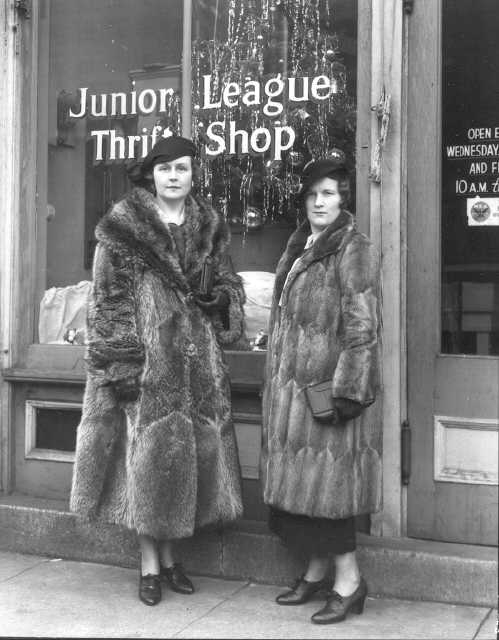
Two women wearing full length fur coats and hats stand outside the Junior League Thrift Shop at 117 South 10th St. in Dec. 1934. They are, left to right, Mrs. Richard Wagstaff and Miss Letitia Fogg, head of the shop. -
1930s
Interest in the arts characterized the early 1930s when the League sponsored art shows, brought the Seattle Symphony to Tacoma and sponsored the Tacoma Philharmonic as well as began its long devotion to the cause of children’s theater. The maternity bed project was endowed again, and well-baby clinics were started by the League and received $1,500 in financial support. The milk fund was organized and was supported by funds raised by an exhibition boxing match in the Stadium Bowl featuring Jack Dempsey. Important League developments included the adoption of a Provisional course, a formal placement system and the distribution of a monthly news sheet.
The Junior League mirrors the world around it, and these years were the ones when uneasy eyes watched Europe bust into the flames of war. The League instituted no new projects during these times, but continued to support the well-baby clinics, contributing about $5,000 toward their maintenance. The need for a permanent source of income lead to the establishment in 1930 of a Junior League Thrift Shop which supported activities of the League until it closed in December 2009.
-
1940s
The outstanding project of these war years was the establishment of the Occupational Therapy Workshop at Tacoma General Hospital. The project, ultimately turned over to the community, was the early beginning of the Tacoma Crippled Children’s School, later a vital part of the Tacoma School System. Interest in children’s theater, children’s radio and creative dramatics was high and accounted for financial expenditures of close to $10,000. The League produced another Follies “The Follies of 1947” and the Thrift Shop moved to Market Street.
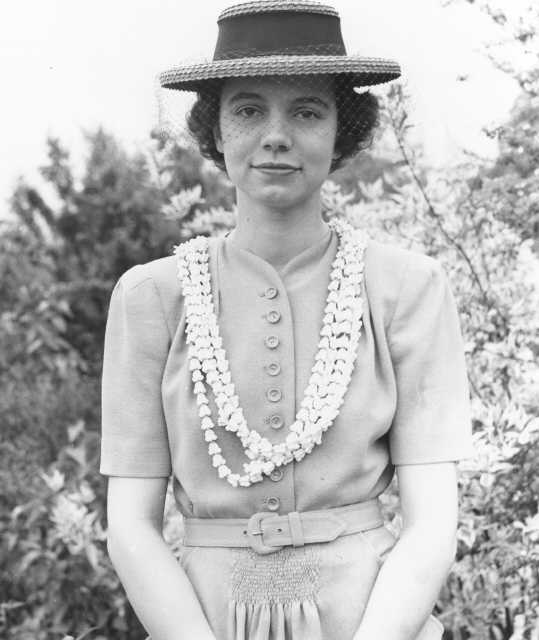
Portrait of 1940 League President Connie Rie (Cornelia Marie) Cardin in the garden of Mrs. Stanley Staaz. Miss Cardin resided over her first meeting since her election as president. She presented an outline of plans for the upcoming American Junior League Association national conference in Seattle. 5/7/40. -
1950s
An outdoor play-shed was built at the Remann Hall Juvenile Detention Center and a play school was started there with League’s financial contribution of more than $5,000. Children’s Philharmonic concerts were underwritten for years. League membership included an enthusiastic group of puppeteers who wrote, produced, and trouped puppet shows to Tacoma school children. A cart to sell sundries and loan magazines at Tacoma General Hospital was organized. The League Bylaws were revised and a compulsory attendance system started.
The League became increasingly aware of its role as a leadership group in Tacoma and in the Association of Junior Leagues of America. Good public relations were fostered by a coffee hour honoring community leaders with whom the League had worked. The League hosted a regional meeting and Mrs. Herrick Allen (Bea) was elected Director of Region IX. Bylaws were revised and a League office was opened.
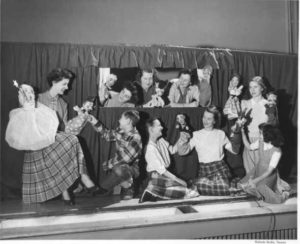
Tacoma Junior League members practice their puppetry skills before several children from Stanley Elementary School in January 1953. Members visited different city schools each week. In February, they planned to bring their puppets to Pierce County schools. The puppeteers made their own puppets and props. (The News Tribune 1-25-53, D-8). (Tacoma Public Library, 22513). Puppet shows were very popular in the 1950s. They were often used by service and civic organizations as entertainment for special events. The League produced puppet shows, continued sponsorship of children’s concerts, and organized a League choral group. Important new projects were a library assistants program, which supplied reference material and trained volunteers to the public school libraries, and the Family Service Program for which the League supplied office space, volunteer help and about $5,000 in financial aid. A major contribution was made to the Puget Sound Rehabilitation Center and the League continued to provide camperships for the Child Guidance
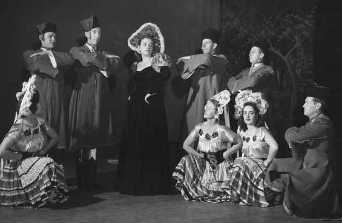
The League had its first “Follies” in 20 years. The “1947 Follies” show would benefit the Occupational Therapy Workshop at Tacoma General Hospital. -
1960s
Follies Fundraisers
The “Daffodil Follies” was produced in 1960 to augment the Thrift Shop income so that the League might continue to meet increasing demands for funds in the community The League co-sponsored a community board institute with the League of Women Voters and raised money through another Follies in 1964 (a second “Daffodil Follies”).
In the Community
Interest in Faith Home, a transitional housing and assistance program for youth, prompted volunteer work at the home and $12,000 in financial support. The League was instrumental in the creation of “Camp Six,” a logging museum at Point Defiance Park and produced a film The Age of Steam Logging. Nearly $10,000 was spent to aid in renovations of the old county-city building by Allied Arts and in repairs to the Girls’ Club. A Children’s Art Workshop was begun and staffed by the League.
The Volunteer Bureau was opened to the public with a League financial commitment of $4,000 per year for a three-year period. The Children’s Art Workshop gained membership support in 1967 and an expanded program working through the schools was initiated in 1968. In June of 1968, $2,500 with Board representation and League volunteer was approved for Grater Lakes Mental Health Center. By 1969, expanded volunteer opportunities were made available and $3,000 was given to the clinic to pay a psychiatrist two days a week. In the spring of 1968, the thrift shop became the “Second Closet” with a new location and image.
In 1969, League volunteers at KPEC radio and television station aired the children’s documentary film, “How Do You Build a City,” and the Volunteer Bureau was placed under the auspices of United Good Neighbor (UGN), the Camp Six docent program at Point Defiance Park was started, and $2,500 was given to the Mentally Retarded Learning Center in conjunction with volunteers and Board representation.
League volunteers helped in the National Alliance of Business (NAB) Program and donated $2,600 to the Tacoma Youth Symphony to help finance their trip to Switzerland. Two thousand dollars was also granted to Image, an experimental tutoring program, to benefit underprivileged children. In 1969, the League brought live children’s theater to Tacoma schools and expanded the program the following year with the aid of the Tacoma Community College Drama Department. GOLF ’69, a League fundraising project, brought $18,000 into the Community Trust Fund.
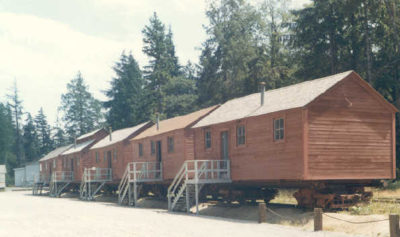
The League was instrumental in the creation of “Camp Six” (pictured), a logging museum at Point Defiance Park, and produced a film called “The Age of Steam Logging.” -
1970s
INTERNAL OPERATIONS
In the fall of 1970, the League office moved to a location on Tacoma Avenue, and the concept of SEARCH became a reality. SEARCH, an in-depth education program for League members, expanded the League’s horizons. The University of Puget Sound, Tacoma Community College and Pacific Lutheran University were involved from the onset with SEARCH classes that opened to community members in 1971. Eighteen thousand dollars for a two-year period, along with Board representation and volunteers, started the formation of the Children’s Gallery at the new Tacoma Art Museum.
The 50th anniversary of the Junior League of Tacoma was celebrated in April 1971. The association with the Tacoma Area Urban Coalition was initiated with the membership voting to donate $5,000, volunteers, and Board representation to foster cooperation in community problem solving. A State Public Affairs Committee was formed.
The League hired a part-time secretary in 1972 and moved to larger headquarters in the Park Tower Apartments. Members instituted a Skills Bank and offered internal and community workshops. The Board continued to revise the Bylaws, created a new board manual in 1975, initiated an Active Professional Group and consolidated the Second Closet and League office at 945 Broadway. Optional Advisory Status (OAS) was developed and, in 1978, the Board added a Community Vice President and adopted an evening-day Provisional course. The year 1979 included provisions for candidate self-submission and cooperation admissions, the implementation of a Future Planning Committee, and a Finance Committee.
COMMUNITY OUTREACH & PROJECTS
In the 1970s, the League focused on community projects, internal restructuring and direction to the organization’s future. Two Follies were held during this decade to raise money for League projects. In 1973, the League produced “Red Hot & Blue” and in 1978, “Sound Off.”League members helped to fund and participate in such numerous projects as Planned Parenthood, Call for Action, Poetry in Institutions, the Greater Lakes Mental Health Center, Family Counseling Service – Strong Family, the Children’s Gallery of the Tacoma Art Museum, self-esteem kits, the Big Toy at Point Defiance, the Tacoma Arts for Youth Council, anti-child abuse publicity, the Parenting Project, Paint-a-Plug, the therapy pool at the Pearl Street YMCA, publication of Capitol Ideas, child advocacy, the Northwest Trek Golden Eagle Project, the Summer Child Development Center, Mary Bridge Hospital Visually Impaired Children’s Project, the Council for Children and Youth, FOCUS on KSTW-TV (public service announcements), the Tacoma Council on Giftedness, the Tacoma Public Library Special Collections, YWCA Special Populations Program, Widowed Information and Consultation Service, Civic Arts Commission Arts, “Kids Art,” and the Good Samaritan Hospital Rehabilitation Center.
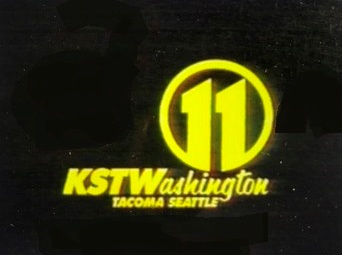
In the 1970s, the League partnered with KSTW-TV to produce public service announcements and a show called “Focus” that featured community programs. -
1980s
INTERNAL OPERATIONS
League Celebrates 70th Anniversary: As the Junior League of Tacoma celebrated its 70th anniversary, the League continued to develop meaningful projects and made contributions to the community while responding to the changing needs of its members. The 1980s brought various changes to the structure of the League, as well as to the Association, which more accurately reflected its international expansion with a name change to The Association of Junior Leagues International Inc. Members adopted an Enabling Fund procedure and a Land, Building and Equipment Fund in 1980Community Board, Committee Changes, 2nd Closet Move: Some of the highlights of this decade include forming the Community Advisory Board, combining the Admissions and Provisional Committees into one more aptly named Membership Development, creating a Funding Development Committee, moving the JLT Office and Second Closet to a new location at 3735 South Park Avenue, near Lincoln High School, entering the computer age by purchasing a new computer system in 1982-83.
Book Sponsorship, Age Change, Evening Rotation, Sustainer Award: Other highlights included sponsoring a book by Mildred Andrews titled Washington Women as Path Breakers to celebrate Washington state’s centennial, changing the Bylaws to allow women to join the League up to age 45 and remain active until age 50, changing the titles of the members of the Executive Committee to better reflect their true role as officers and advisors, instituting a day and evening rotation for Board of Directors meetings, creating the annual Ruth Wheeler Sustainer of the Year Award, establishing the Directors’ Institute, establishing a President-Elect position, and developing a new logo for the League.
COMMUNITY OUTREACH & PROJECTS
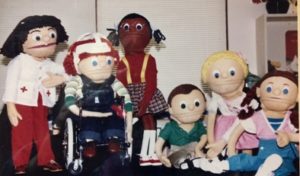
League members took Kids on the Block puppets and skits to area elementary schools to teach children about physical and learning disabilities, safety, and other areas of social concern. Through candid, honest and entertaining dialogue, the puppets educated and inspired children in the audience to ask pertinent and sensitive questions at the end of the skits $170K on Projects, and $39K in Community Assistance: The League continued to focus on the community with a new emphasis on reaching a more diverse population. JLT spent more than $170,000 on projects during the decade and $39,318 in Community Assistance Funds. JLT also gave $25,000 to the Greater Tacoma Community Foundation that gave members an opportunity to network with another agency trying to meet community needs.
Many Projects: Projects that League participated in during this time were the Good Samaritan Rehabilitation Project, the Tacoma Rare Book Room, Tacoma Public School’s Child Sexual Abuse and Treatment Program (Sunshine Girls), Tacoma Street Banners, the SAFE Project, a medication compliance program for the elderly, Seniors Against Crime, the Downtown Gallery, the Visitors and Convention Bureau, KSTW-TV Focus and public service announcement projects, Washington Women’s Employment and Education (WWEE), Court Appointed Special Advocates (CASA), Hands On Art, the Washington State Historical Museum, Women to Women (alcohol abuse), the Children’s Museum of Tacoma, Kids on the Block (puppet show), the Mary Bridge Children’s Hospital Festival of Trees and Done-in-a-Day projects.
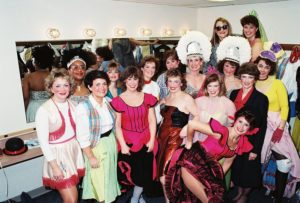
“Follies – Cause for Applause” was produced in 1989 with proceeds of $82,971 2nd Closet, Follies, Car Rally, Auction & Fashion Event: The Second Closet continued to be a priority of the League and served as a much-needed community service as well as a funding source for JLT. During these ten years, there were other fundraising events to add to the financial well-being of the JLT. In 1985, the Follies called “Tacoma Tempo ’85” raised $103,600. “Follies – Cause for Applause” was produced in 1989 with proceeds of $82,971. The first Car Rally fundraiser was held in 1987 and became an annual event for several years. The ever-popular holiday auction, The Bid & Buy, continued throughout the decade, and League partnered with Nordstrom in holding an annual fashion event to benefit JLT.
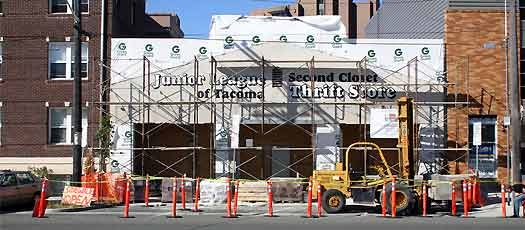
Pictured is a new League Office and Second Closet that were moved in the 1980s to a new location at 3735 South Park Avenue, near Lincoln High School. -
1990s
INTERNAL OPERATIONS
Office and Thrift Store Relocate: After much effort, in November of 1994, the League relocated its office and Second Closet Thrift Store to 7 Tacoma Avenue North.
IMPACT Newsletter is Primary Communication Tool: The IMPACT continued to be the central means of communication for the League in the 1990s. It went from being a nine issues a year news magazine to quarterly issues produced in house. E-mailing everything from IMPACT articles and Board reports to Consent Agendas became the norm as the decade went along. The first League video was produced in 1998 for recruiting members and for general League information.
New Council System Adopted: In 1999, the Executive Committee and 22-member Board style of governing was changed with the adoption of a new Council System governance. Policy governance became a household phrase for League members, a Code of Conduct for the Board of Directors was established and more detailed finance policies were developed.
MEMBERSHIPNew Member Course and Member Trainings: The New Member course also changed over the decade. It went from an eight-month course to a two-month course, and finally ended up as a three-day course that was repeated as many as three times during the year. New member numbers were fairly consistent. Over the decade, training efforts continued with engaging speakers and trainers.
FINANCE/FUNDRAISING
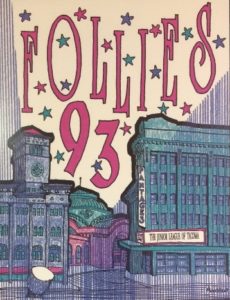
1993 was the last year of the Follies and “Follies ’93” brought in $96,200 for the League. Last Follies Held & Successful Decorators’ Showhouse Hosts Martha Stewart:
The League held two major fundraisers in the 1990s as well as some annual events. 1993 was the last year of the Follies and “Follies ’93” brought in $96,200 for the League. In April 1997, Martha Stewart visited Tacoma as a keynote speaker at the League’s Decorators’ Showhouse and Garden Tour at Lakewold Gardens in Lakewood. A total of $118,000 was raised for League programs during the three-week event. Fifteen thousand dollars in Showhouse funds benefited the Swan Creek Library Computer Center with plans for more community spending underway.Other Fundraisers Net Funds for League Activities: Community grants contributions to local nonprofits needing assistance totaled over $60,000 and an Annual Fund campaign was started, raising $9,000 the first year. It was temporarily renamed the Relocation Drive Fund in 1993-94 to support a move to a new location. The Second Closet Thrift Store moved with the office in 1994. It went from netting about $20,000 and run solely by JLT volunteers at the beginning of the decade to netting a high of $38,000 in 1999 and operated by a manager and paid staff. The Bid & Buy Auction and wreath sales made $10,000 in 1991 and, by 1995, these fundraisers earned $16,000 with outside League procurements acquired. By 1999, the Bid & Buy Auction raised $47,000 and was a highly anticipated community event.
COMMUNITY OUTREACH & PROJECTS
Focus Changes to the Family Unit & Literacy: The League’s focus changed from women and children’s issues to the family unit, and the League ended the decade by focusing on literacy. Its projects were many and efforts outstanding. The League participated in the Mary Bridge Children’s Hospital Festival of Trees community fundraiser every year, KSTW-TV focus shows and public service announcements to educate viewers about community nonprofits, Director’s Institute training for local nonprofits, LINC (League Information and Networking in the Community) – a presentation to establish community collaborations and recruit new members, an immunization project, Woodlawn Faith Homes Independent Living Skills Course, Kids on the Block puppet shows at Pierce County elementary schools, Girls II Women at the Gonyea Boys and Girls Club, Positive Parenting, the Henderson Bay Teen Parent Project, Plant A Seed…Read.
Community Outreach Projects Were Many and Varied: Community Outreach projects touched many lives as well during the decade, and included the YWCA Battered Women’s Shelter, Washington Women’s Employment and Education (WWEE), AIDS housing, the first annual AIDS Walk, Salvation Army Giving Trees, Habitat for Humanity, Tone School donations, the Crisis Pregnancy Center, Hospitality Kitchen, the Children’s Museum of Tacoma, Boys and Girls Clubs, Guadalupe House and many more. The League left the State Public Affairs Network (SPAN) in 1995 and returned to the Junior Leagues of Washington State (JLWS) in 1998.
Community Scholarship Initiated: A League community scholarship was initiated in 1995 with a $500 recipient.
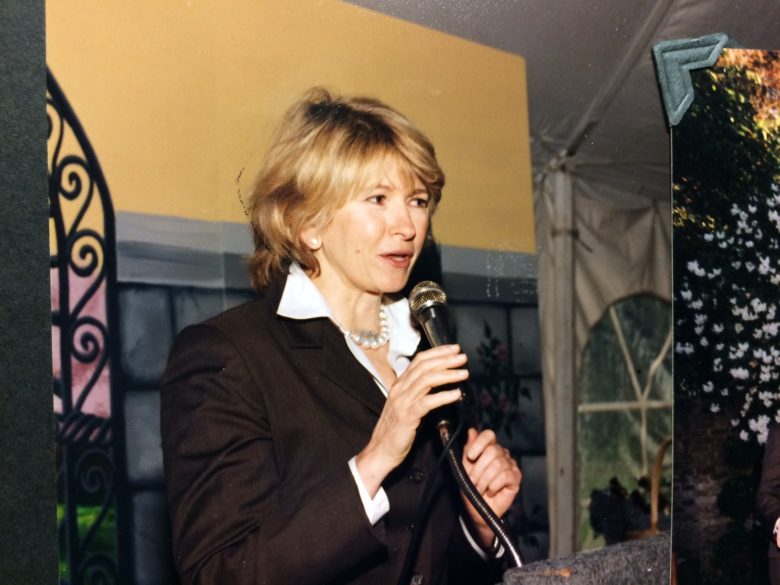
In 1997, Martha Stewart visited Tacoma as keynote speaker at the League’s Decorators’ Showhouse & Garden Tour at Lakewold Gardens -
2000s (2000-2009)
Change, Adversity and Renewal
This decade saw significant change, adversity, and renewal for the Junior League of Tacoma. The League changed office locations three times and after decades of community service, closed the Second Closet Thrift Store in 2009. League members developed the organization’s first website (www.jltacoma.org) in 2001-02, updated JLT’s branding and adopted a new AJLI international logo in 2003-04, began the League’s first formal email member communications tool, E-Blast, in 2006-07, held frank discussions about the organization’s continued viability with a dwindling membership, and ended the decade with a stronger and renewed organization.
INTERNAL OPERATIONS
Developing Women: With leadership from AJLI and its focus on developing women as catalysts for lasting community change, (rather than the traditional shorter term project orientation), JLT evolved from a project-orientated focus to a focus on training its members with the goal of developing women as tomorrow’s leaders.
Second Closet Thrift Shop: In the fall of 2004, the League learned its lease for its office and Second Closet location in the north end of Tacoma at 7 Tacoma Avenue would not be renewed in the spring. A Relocation Committee was created and after much research and hard work, the League moved its office and Second Closet Thrift Store to 1003 Pacific Avenue in downtown Tacoma. As the lease for the downtown office was due to lapse in the spring of 2010, a Facilities Committee was formed in 2009 to consider the League’s options.JLT opened the Junior League Thrift Shop (later called the Second Closet Thrift Shop) in 1930. The decade from 2000-2009 was a tumultuous time for the long-time community project and fundraiser. At the beginning of the decade, the Second Closet profits continued to decline. In 2004-05, its 75th year, the Second Closet had a paid store manager and profits had increased. By 2008, the League saw slowing sales trends (as in the national retail market) and was unable to keep pace with increases in rent and employee expenses.
After much membership deliberation, in 2009-10, it was decided that the Second Closet, no longer a viable, financial solution for JLT, would be closed forever. In December of 2009, the Second Closet was shut down. Saying goodbye to the store also meant moving the office to a smaller, more affordable space. The budget was closely monitored and adjusted during this year. Changing income sources meant that the League could no longer have a full-time bookkeeper or any other employees. The focus on budget helped keep the Junior League of Tacoma viable.
MEMBERSHIP
Membership Primary Focus: As was the case in many Leagues and other volunteer organizations throughout the country, the decade saw a significant decline in active and sustaining membership and related funding. Membership was the league’s primary focus and the organization worked to maintain members. Open houses were held every year for recruiting; many in sustainer homes during the summers. The New Member curriculum was redesigned and the Membership Council experimented with the number of courses held each year. Opportunities were afforded the active membership and leadership in local (NW Exchange, Board Retreats) and AJLI trainings.
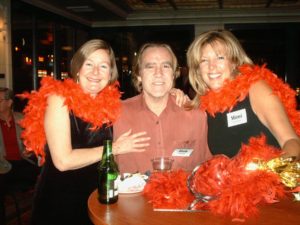
Sustainers Lori Bonvicini and Mimi Hackleman flank Lori’s husband Bob at the 2009 Follies Reunion held at the Pantages Center for Performing Arts. Follies Reunion: In September of 2008, a group of sustainers formed an ad-hoc committee to look into putting on a large sustainer event/reunion to rejuvenate the League through stimulating sustainer involvement. The plan was to invite actives and sustainers alike to the event. The committee’s goal was also to provide a fun and engaging event for JLT sustainers. “Follies…Thanks for the Memories” was held at the Pantages Center for Performing Arts in January 2009 and was the most highly attended sustainer event in recent history.
Sustainer Advisory Council: During the 2009-2010 year, a group of sustainers got together when President Elect Angel Blanford reached out to ask for help from sustainers to help stabilize JLT. A small group of sustainers came together to support the League during difficult times. The informal group formed into the Sustainer Advisory Council (SAC) that would advise and support JLT leadership and inform sustainers about the League. SAC members served as advisors to the Council directors of the League, mentors to individual active members, and held up the League during a challenging time. SAC members attended general membership meetings to explain the history of JLT by decade to help share the organization’s rich history with its young membership. Sustainers were also active in contributing to and putting on the Bib n’ Bid auction/fundraiser.
FINANCE/FUNDRAISING
During the first several years, two successful fundraisers energized the membership and budget. With the League’s focus on literacy, an American Girl event was held in which actives, sustainers and women from the community participated, with their daughters, in an event that delighted the hearts of even the oldest “girls” in attendance.
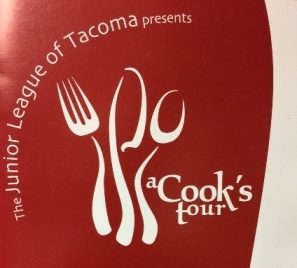
Well known chefs from the Puget Sound area presented their “best” in some of Tacoma’s most beautiful and unusual homes during the League’s “A Cook’s Tour” fundraiser. From 2005-07, JLT held a popular and successful fundraiser — A Cook’s Tour. Well known chefs from the Puget Sound area presented their “best” in some of Tacoma’s most beautiful and unusual homes. Attendees could hop on a bus from various Tacoma locations and be treated to gourmet food. Throughout the decade, consistent fundraisers brought funds into JLT: the annual auction, started in 2006-07, earned over $100,000, and the Annual Fund earned over $50,000. COMMUNITY OUTREACH & PROJECTS
Focus on Literacy: The League’s platform was literacy early in the decade, followed by health and wellness in 2008-2009. Literacy was a key JLT focus during this decade and its projects reflected that theme. Plant a Seed…Read was in its second year in 2001-02 with literacy trainings in the Pierce County area. In partnership with the Tacoma Public Library, Plant a Seed…Read was part of the Family Lecture Series that continued through 2008. It focused on at-risk populations and the organizations that support them. It was a community-wide outreach to parents and teachers stressing the importance of early exposure for children to books and language games.
Over several years, community literacy workshops and educational events were held bringing in award-winning children’s authors and illustrators as speakers. One workshop was held with actor Henry Winkler as the keynote and another called Read to Succeed, Early Learning Opens the Door II featured LeVar Burton, host of the popular PBS series, Reading Rainbow.
In 2006-07, the Family Lecture Series and Done-in-a-Day programs joined forces to support the literacy focus and the League adopted Roosevelt Elementary School as a partner school. Book drives and many other activities were developed around literacy and later health and wellness at Roosevelt.

The League partnered with MultiCare Health System on a community event called “Do Something Healthy” featuring Olympian Shaun White as the keynote speaker. Health and Wellness Platform: The League voted in health and wellness as a new project platform for 2008 that continued through 2011. A focus evolved on nutrition and obesity prevention for area women and children – later narrowing in on the fight against childhood obesity. The Roosevelt Elementary partnership continued bringing in nutrition speakers and having JLT members lead students in fun, physical programs and offer healthy snacks to children who participated.
Projects focusing on health and wellness and childhood obesity prevention included Kids in the Kitchen, an AJLI-sponsored project voted as the League’s signature project from 2009-2011. Its goal was to empower youth to make healthy lifestyle choices and help reverse the growth of childhood obesity and its associated health issues. JLT partnered with the Children’s Museum of Tacoma and brought a program and exhibit called “Smart Moves with Food and Fitness” to the Boys & Girls Club. The program helped families identify and implement small changes in eating and physical activity habits that can have a significant impact on health and wellness.
Other activities and projects included health and wellness trainings and speakers at General Membership Meetings, food and formula and diaper drives, a project with FISH Food Bank, decorating a health and wellness-themed tree for the Mary Bridge Children’s Hospital Festival of Trees, and a collaboration with MultiCare Health System on a community event, “Do Something Healthy,” with Olympian Shaun White as the keynote speaker.
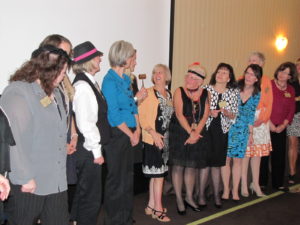
Every year at JLT’s Annual Dinner, the gavel is passed down through the years from past presidents until it gets to the new president being introduced that evening. Educational Scholarships and Community Assistance Grants: During the decade, the League gave scholarships to high school students and grants to local community organizations. JLT awarded educational scholarships to high school senior girls who demonstrated a strong commitment to community service. In 2001, the scholarship was renamed the Junior League of Tacoma Jane Russell Scholarship in honor of Russell Company Executive Jane Russell, former League President and Ruth Wheeler Sustainer of the Year recipient. This program began in 1995 and continued through 2005. First stated in the 1980s, Community Assistance Grants were given through 2005 to local community organizations in need of financial assistance.
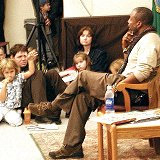
During its focus on literacy, the League brought the long-running PBS children’s series host of “Reading Rainbow,” LeVar Burton, Jr., to lead a workshop at the Tacoma Public Library. -
2010s (2010-2019)
At the beginning of this decade, the Association of Junior Leagues International was one of the largest and most effective volunteer organizations in the world, with more than 155,000 members and 293 leagues in four countries. As with many nonprofits, challenges for many of the leagues including the Tacoma League included increasing the value of membership while finding new ways to create lasting community impact.
INTERNAL OPERATIONS
As the League first started in 1921, in 2011, the organization celebrated its 90th anniversary. With the League’s focus on training its members to become effective volunteers and civic leaders, one of the most significant accomplishments of this decade was the establishment of a League-sponsored Women in Leadership Forum featuring a panel of local women leaders. Begun in 2012, the inspiring annual event continued each year.
Websites and Assessments: The League launched a new website (2016-17), carried out a resource assessment, and conduced a youth experiencing homelessness needs assessment and training sessions.
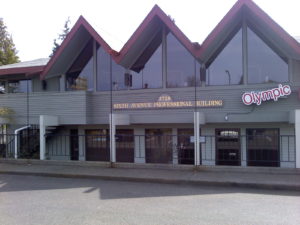
With the help of the newly formed Sustainer Advisory Council, in the spring of 2010, the JLT office moved to 3720 6th Avenue in an affordable leased space owned by Sustainer Ann Zenczak and her husband. New Office Space without Second Closet: Upon closing the Second Closet in 2009, a new smaller office was needed. But due to the League’s financial difficulties, members were discussing the possibility of eliminating a physical office and developing a virtual office. With the help of the newly formed Sustainer Advisory Council, in the spring of 2010, the JLT office moved to 3720 6th Avenue in an affordable leased space owned by Sustainer Ann Zenczak and her husband.
MEMBERSHIP
Members participated for several years in an AJLI-sponsored Action Learning Team to share solutions to common challenges with other similar-sized leagues. Social media exploded during this decade and posts on Facebook and Instagram kept members informed about activities and events. Super Saturday trainings were implemented for new members and monthly “Fun Club” socials were planned for sustainers.
COMMUNITY OUTREACH & PROJECTS
League Focuses on Health & Wellness & Childhood Obesity: League members focused on health and wellness in the first few years. Then in response to the startling statistics on unhealthy eating and obesity in children throughout the U.S., the League shifted its focus to childhood obesity for several years.
Health and wellness and/or childhood obesity activities included Mary Bridge Children’s Hospital Festival of Trees and “Ready, Set, Go” on childhood obesity, MultiCare Health System’s “Do Something Healthy” event, MultiCare’s Tree House (a place for families to stay near their hospitalized loved ones), a Campfire meal program, the Pierce County Hunger Walk, a FISH Food Bank project, a clothing drive for Washington Women’s Employment & Education, a diaper drive, a “Food & Fitness Fun” health fair at the Gig Harbor Boys & Girls Club, and a Mobile Food Market donation.
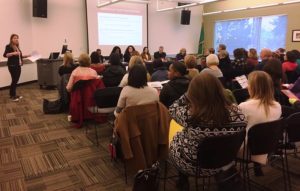
When the League’s focus shifted to youth experiencing homelessness, events included League and community members attending a Summit on Youth Homelessness several consecutive years. Pictured are attendees at the 2017 Summit Focus Shifts to Youth Experiencing Homelessness: As the League’s focus/platform typically changed every few years, its focus shifted to youth experiencing homelessness. Activities and projects included Tacoma Rescue Mission’s “Family Fun Night,” The Homestretch film screening and panel discussion, a Youth Homelessness Summit with Poverty Immersion, Youth Advocacy Days at the Washington State Legislature supporting youth homelessness issues, participation as a member of the Pierce County Youth Coalition, Outreach at HYPE Center for homeless youth, and a Fund-A-Ride community fundraiser.
Several projects were done with Beacon Center (a homeless youth and young adult drop-in center), and many youth experiencing homelessness drives were held among the membership including drives for toiletries, winter clothing, socks, sports bras, hygiene products, prom dresses, laundry bags, and emergency and food kits.
FINANCE/FUNDRAISING
Throughout the decade, major fundraisers included the annual auction (dinner event with bidding on goods or services) and annual fund in which members donated money to the League. Smaller fundraisers included wine tastings, holiday wreath sales, sponsorships, and Amazon Smile proceeds.
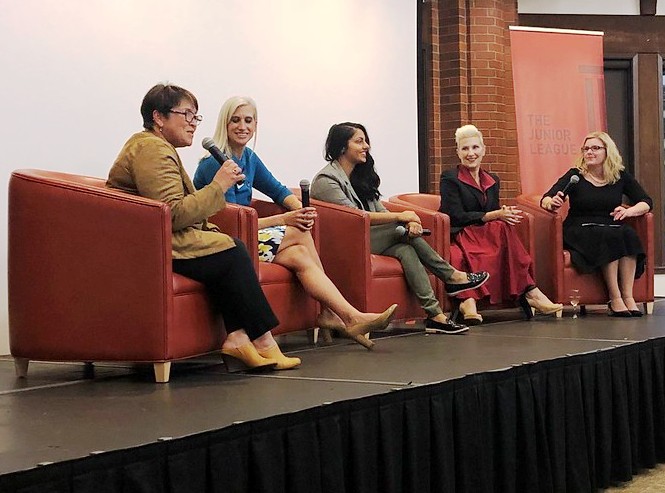
One of the most significant accomplishments of this decade was the establishment of a League-sponsored Women in Leadership Forum featuring a panel of local women leaders.